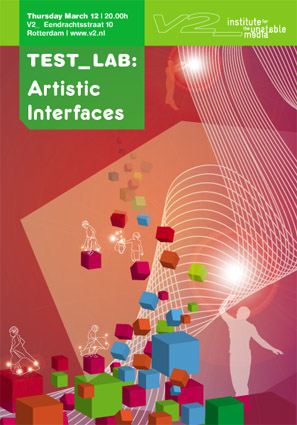Our bodies shape how and what we see of the physical world. Similarly, digital interfaces shape our experiences of digital worlds. While nature governs how we experience our physical environment through the evolution of our senses, the evolution of digital interfaces is an artistically driven process. Thus far, we experience our physical surroundings in much greater richness than we do our digital worlds. With digital content growing more important to us every day, and increasingly shaping the way in which we (can and cannot) act and interact with our environment, it seems about time for some serious and critical exploration of digital interfaces.
A number of artists are currently experimenting with radically new interfaces to broaden the possibilities for the exploration of digital worlds and their underlying data structures. These artists often aim to establish relations between users and digital content that are similar in nature to exploring the physical world. Therefore, they often attribute a crucial role to the user’s body or, alternatively, to the embodiment of digital machinery. By doing so, such interfaces do not only affect how we engage with digital worlds, but also more and more begin to shape our physical environment and the way in which we construct and experience the realities that we live in.
While designers aim to advance interfaces to more intuitive use, through notions such as metaphor, artists often take a radically different approach, by incorporating counter-intuitive responses. This tension becomes apparent where designers meet artists in Artistic Interface projects, and brings along with it numerous conceptual and technical challenges in human-machine interaction: What type of aesthetic can balance intuition and counter-intuition in engagement with digital interfaces? Can the notion of ‘play’ take on a role in such interfaces? When can we say that an interface is intuitive or not? Which technologies can facilitate Artistic Interfaces? And how should these technologies be implemented to broaden the possibilities for exploration of digital content?
Featuring: Kristina Andersen, Daan Roosegaarde, Ludwig Zeller, Tom Heene, and Jacques van de Veerdonk.
For more information, please contact Michel van Dartel, E: michel@v2.nl | T: +31 (0)10 2067272.
